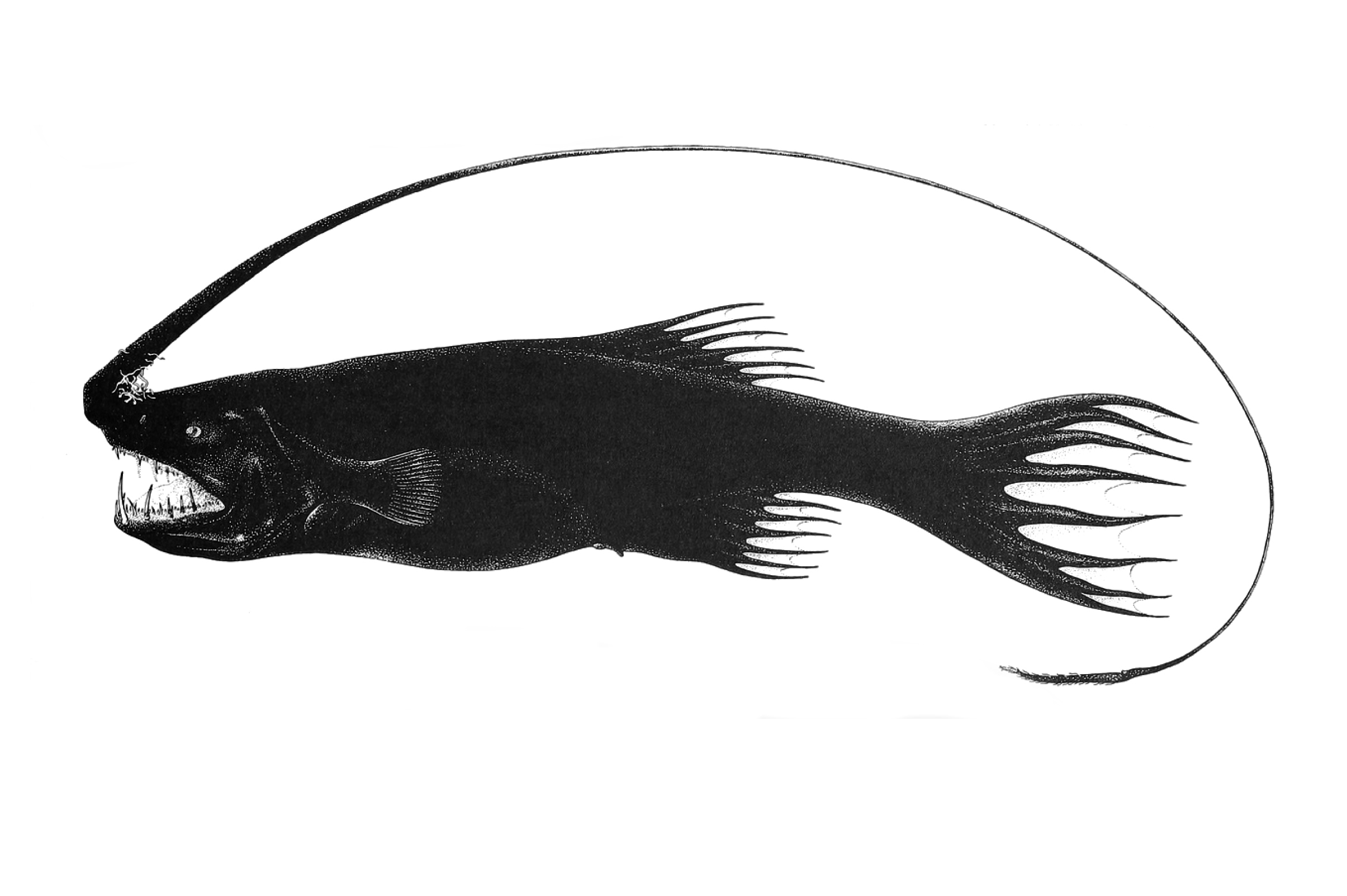Paxton's Whipnose, Gigantactis paxtoni Bertelsen, Pietsch & Lavenberg 1981
Other Names: Slender Anglerfish

Illustration of the holotype of Paxton's Whipnose, Gigantactis paxtoni, AMS I.20314-018. Source: R. Nielsen, Fig. 36, in Bertelsen et al. (1981) LACM Contrib. Science 332: 1-74 figs 1-69 / Biodiversity Heritage Library. License: CC by Attribution
Summary:
A black whipnose with an extremely long illicium (168-198% SL), a cluster of white filaments at the illicial base, and a gradually tapering escal bulb (12-28% SL) that lacks basal filaments.
Cite this page as:
Bray, D.J. 2017, Gigantactis paxtoni in Fishes of Australia, accessed 06 Jul 2025, https://fishesofaustralia.net.au/home/species/3380
Paxton's Whipnose, Gigantactis paxtoni Bertelsen, Pietsch & Lavenberg 1981
More Info
|
Distribution |
Off Newcastle, New South Wales, to SE of Kangaroo Island, South Australia; also in the Tasman Sea between Australia and New Zealand. Elsewhere the species is known from the Indo-west Pacific: south western Indian Ocean, off West Papua, Indonesia, and off New Zealand. |
|
Features |
Dorsal fin 6-7; anal fin 5-6; Pectoral fin 18-21. Illicium extremely long, length 168-198% SL, with a prominent cluster of filaments at base; escal bulb 12-28% SL, gradually tapering into a conical, spinulose, darkly pigmented distal prolongation. Dentary teeth in 3-4 longitudinal rose, longest dentary tooth 3.4-7.1% SL. Longest caudal-fin ray 27.5-35% SL. |
|
Biology |
Female and male gigantactinids are extremely sexually dimorphic. The dwarf males attach to the much larger females for a small period of time using pincer-like denticles - they do not permanently attach to females. |
|
Similar Species |
Differs from other Gigantactis species in having an extremely long illicium with a cluster of filaments at the base, and a dark, spiny, tapering conical escal bulb with short filments on the distal prolongation. |
|
Species Citation |
Gigantactis paxtoni Bertelsen, Pietsch & Lavenberg 1981, Contrib. Sci. 332: 39, figs. 36-38. Type locality: off Broken Bay, NSW, 0-900 m. [33°28'S, 152°33'E]. |
|
Author |
Bray, D.J. 2017 |
|
Resources |
Paxton's Whipnose, Gigantactis paxtoni Bertelsen, Pietsch & Lavenberg 1981
References
Bertelsen, E., Pietsch, T.W. & Lavenberg, R.J. 1981. Ceratioid anglerfishes of the family Gigantactinidae: morphology, systematics and distribution. Los Angeles County Museum of Natural History Contributions in Science 332: 1-74 figs 1-69
Pietsch, T.W. 1999. Families Caulophrynidae, Neoceratiidae, Melanocetidae, Himantolophidae, Diceratiidae, Oneirodidae, Thaumatichthyidae, Centrophrynidae, Ceratiidae, Gigantactinidae, Linophrynidae. pp. 2026-2037 in Carpenter, K.E. & Niem, V.H. (eds). The Living Marine Resources of the Western Central Pacific. FAO Species Identification Guide for Fisheries Purposes. Rome : FAO Vol. 3 pp. 1397-2068.
Pietsch, T.W. 2009. Oceanic Anglerfishes. Extraordinary Diversity in the Deep Sea. Berkeley and Los Angeles : University of California Press pp. i-xii + 1-557.
Stewart, A.L. & Pietsch, T.W. 2015. T116 Family Caulophrynidae (pp. 903-904), 117 Family Melanocetidae (pp. 905-907), 119 Family Diceratiidae (pp. 916-917), 120 Family Oneirodidae (pp. 918-927), 121 Family Ceratiidae (pp. 928-931), 122 Family Gigantactinidae (pp. 932-936), 123 Family Linophrynidae (pp. 937-939). In: Roberts, C.D., Stewart, A.L. & Struthers, C.D. The Fishes of New Zealand. Wellington : Te Papa Press Vol. 3 pp. 577-1152.



